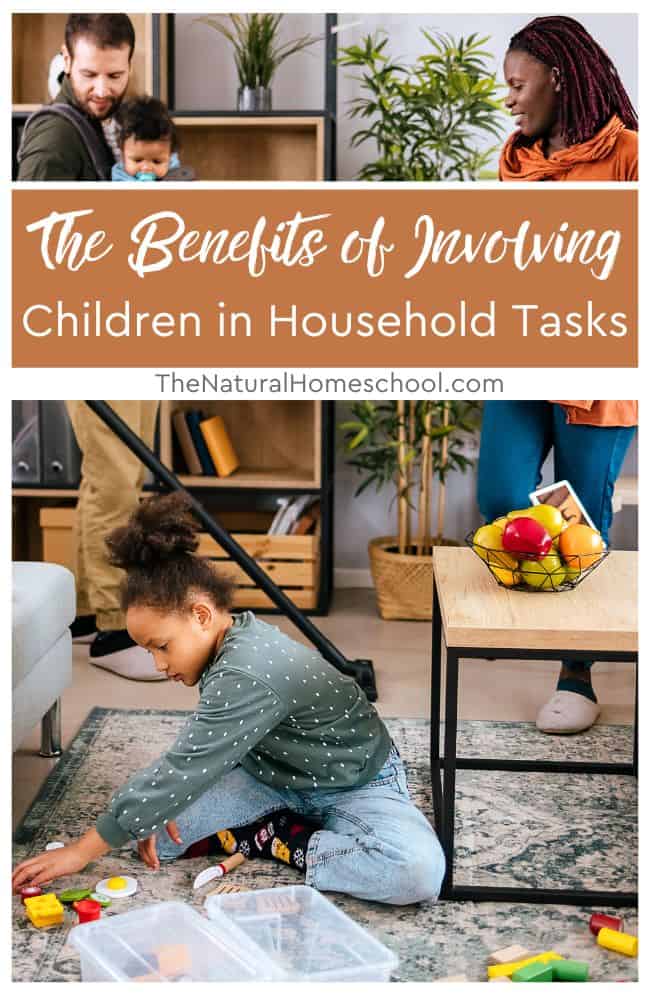From an early age, children are taught the importance of responsibility and contributing to their family. Oftentimes, this takes the form of assigned household chores – mundane tasks that children reluctantly complete in order to appease their parents. However, the concept of chores is evolving into something much more meaningful and impactful – shared household responsibilities. This shift not only changes the way we view household tasks, but also empowers children to develop essential life skills and build character. In this article, we will explore the many benefits of involving children in household tasks and innovative ways to make these tasks enjoyable and educational.
Age-Appropriate Chores for Different Stages
Before diving into the various methods of engaging children in household tasks, it is important to consider age-appropriateness. Different stages of childhood and adolescence come with different levels of capability and understanding. Therefore, it is crucial to assign tasks that are suitable and safe for each child. Here are some examples of age-appropriate chores:
Toddlers (2-3 years old)
- Putting away toys
- Making their bed (with assistance)
- Helping set the table
- Wiping up spills or messes with a damp cloth
At this stage, children are just learning about responsibilities and may not have fully developed motor skills. Simple tasks that involve picking up and basic cleaning can help them understand the concept of helping out around the house.
Preschoolers (4-5 years old)
- Sorting laundry (by color or type)
- Clearing the table after meals
- Sweeping or vacuuming small areas
- Helping with simple meal prep (e.g. stirring, pouring)
As preschoolers continue to develop their motor skills and understanding of routines, they can take on slightly more complex tasks. They may also enjoy helping out in the kitchen and feeling like they are contributing to the family meal.
Elementary School (6-11 years old)
- Putting away groceries
- Folding and putting away laundry
- Helping with pet care (e.g. feeding, brushing)
- Making simple meals or snacks (with supervision)
As children enter elementary school, they can handle more responsibility and tasks that require some physical, mental, and emotional maturity. They may also appreciate the opportunity to contribute to the household in a more meaningful way.
Middle and High School (12+ years old)
- Doing laundry independently
- Preparing meals for the family
- Mowing the lawn or other outdoor tasks
- Cleaning bathrooms or other larger areas
At this stage, teenagers are capable of handling almost any household task. It is important to communicate the expectations clearly and provide guidance if needed, but allowing them to take on these responsibilities can help prepare them for adulthood.
Making Chores Fun with Games and Rewards

One of the biggest barriers to involving children in household tasks is the perception that chores are boring and unenjoyable. However, by incorporating elements of fun and play, these tasks can become more engaging and even enjoyable for children. Here are some ideas for making chores more fun:
Make it a Race
Set a timer and challenge your child to complete their task before the time runs out. This can add an element of excitement and competition to an otherwise mundane chore.
Turn up the Music
Create a playlist of upbeat songs and have a dance party while completing chores. This can make the time go by faster and create a fun atmosphere for everyone involved.
Assign Roles
For larger tasks, such as cleaning the house, assign different roles to each family member. This allows for a sense of teamwork and cooperation, and can also make the task feel less daunting.
Create a Reward System
Consider implementing a reward system for completed chores. This could be in the form of a sticker chart or points system, where children can earn rewards for completing tasks. This adds a sense of motivation and accomplishment for children.
Incorporate Games
There are many games that can be played while completing household tasks. For example, “I Spy” while dusting or making a scavenger hunt out of putting away toys. These games add an element of fun and creativity to the task.
Teaching Responsibility Through Daily Routines
Routines are an important part of a child’s development, providing structure and predictability in their day-to-day lives. By incorporating household tasks into daily routines, children learn the importance of responsibility and consistency. Here are some ways to incorporate chores into daily routines:
Morning Routine
Include simple tasks, such as making their bed, getting dressed, and putting away their pajamas, into their morning routine.
Mealtime Routine
Have children help set the table, clear dishes, and wipe down the table after meals. This helps them understand the process of mealtime and feel like they are contributing to the family.
Bedtime Routine
Incorporate tasks like tidying up their room, putting away toys, and picking out their clothes for the next day into the bedtime routine. This not only teaches responsibility, but also helps create a calmer environment for bedtime.
Creating a Chore Chart System
One effective way to involve children in household tasks is by creating a chore chart system. This allows for a visual representation of tasks and responsibilities, as well as a sense of accountability for completing them. Here are some tips for creating a chore chart system:
- Make it age-appropriate: As mentioned earlier, it is important to consider the capabilities and understanding of each child when assigning tasks.
- Keep it simple: Avoid overwhelming children with too many tasks. Start with a few simple chores and gradually add more as they become more comfortable and confident.
- Be consistent: Consistency is key when it comes to routines and household tasks. Set designated days and times for completing tasks and stick to them.
- Rotate tasks: To prevent boredom or resentment towards certain tasks, rotate assignments among family members.
- Use visuals: Incorporate pictures or symbols on the chore chart so younger children can easily understand their responsibilities.
- Celebrate completion: Recognize and praise children for completing tasks on the chore chart. This can be done through verbal affirmation, a sticker, or a point system.
Encouraging Teamwork and Cooperation
Involving children in household tasks not only teaches responsibility but also fosters teamwork and cooperation within the family. Here are some ways to encourage collaboration:
Set a Good Example
Children learn by example, so it is important for adults to model good behavior by participating in household tasks alongside their children.
Communicate Expectations Clearly
When assigning tasks, be sure to communicate expectations and instructions clearly. This will help avoid confusion and conflicts between family members.
Allow for Input and Choices
Giving children a choice in which tasks they would like to do can increase their motivation and sense of ownership over their responsibilities. It also allows them to contribute to the decision-making process in the family.
Provide Positive Reinforcement
Praise and acknowledge children for their contributions to the household. This positive reinforcement can encourage them to continue participating in tasks and develop a sense of pride in their work.
Incorporating Educational Aspects into Chores
Household tasks not only teach practical skills, but they can also incorporate educational aspects that benefit children in their academic and personal development. Here are some ways to make chores more educational:
Practice Math Skills
Tasks such as counting and sorting laundry, measuring ingredients while cooking, and dividing up portions of food can help children practice their math skills in a practical setting.
Learn Life Skills
Involve children in tasks that require problem-solving, critical thinking, and decision-making. This can include tasks like budgeting for groceries, planning meals, and fixing minor household repairs.
Teach about Sustainability
Chores can also be a way to teach children about sustainability and caring for the environment. Incorporate tasks such as recycling, composting, and conserving energy into their responsibilities.
Cultivate Creativity
Encourage children to use their imagination and creativity while completing tasks. For example, they can create a story while cleaning up their toys or make a game out of folding laundry.
Balancing Chores with Leisure Time

It is important to strike a balance between completing household tasks and allowing for leisure time. While it is beneficial for children to participate in and learn from household responsibilities, it is also important for them to have downtime and engage in activities they enjoy. Here are some tips for finding this balance:
- Set designated times for chores: This allows for structure and consistency in completing tasks, but also ensures that there is time for leisure activities.
- Plan fun activities: Make sure to schedule time for fun and enjoyable activities. This could be a family outing, a game night, or simply spending quality time together.
- Be flexible: Sometimes things come up, and it may not be possible to complete all the assigned tasks. It is important to be understanding and flexible in these situations.
Conclusion
Involving children in household tasks goes beyond just completing chores – it is an opportunity to teach essential life skills, build character, and foster a sense of responsibility and belonging within the family. By incorporating innovative and fun ways to engage children in household tasks, we can shift the paradigm from chores to shared responsibilities. Through age-appropriate tasks, routine, teamwork, and educational aspects, we can empower our children and prepare them for a successful future. So, let’s embrace these shared responsibilities and create a happier home for everyone.
